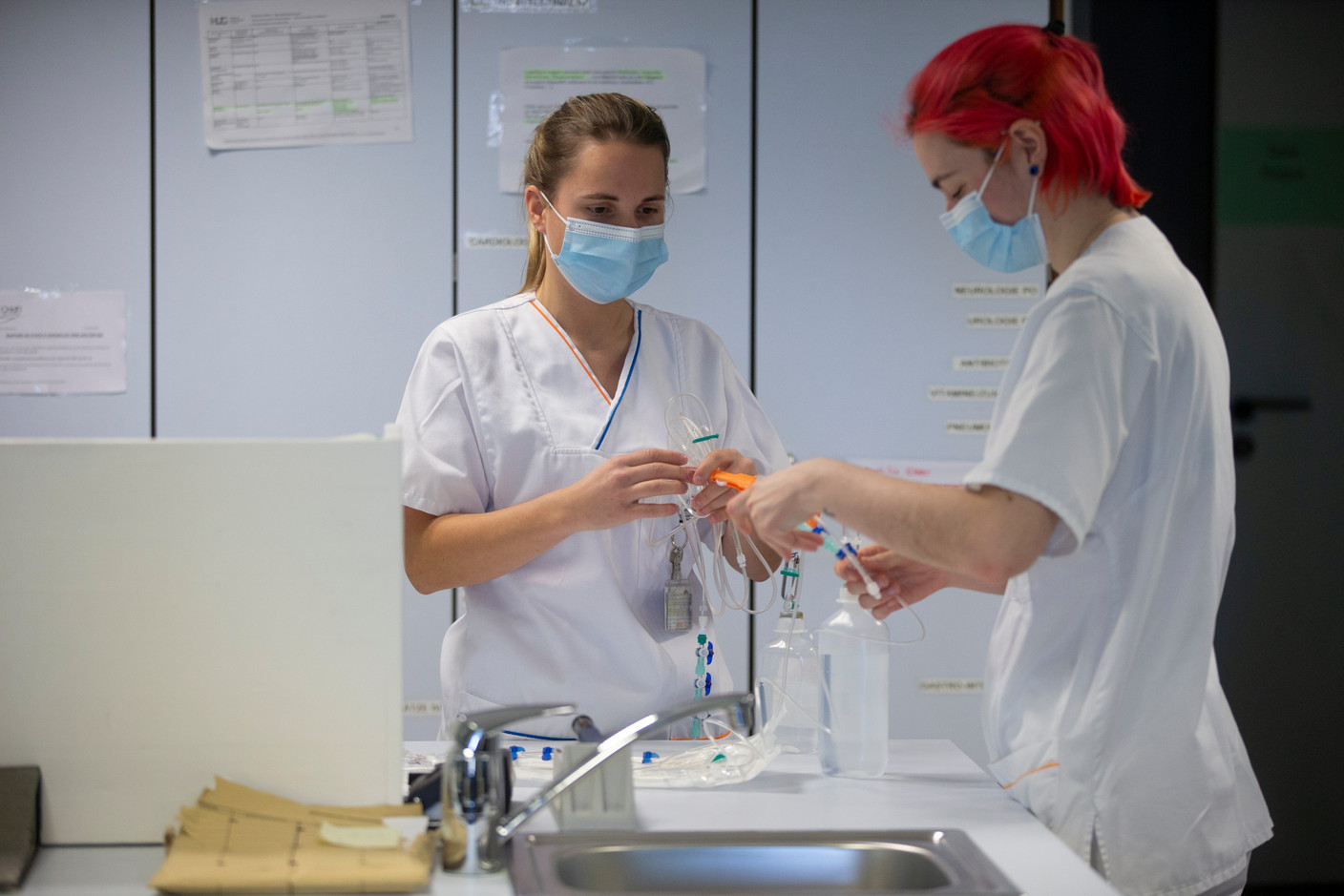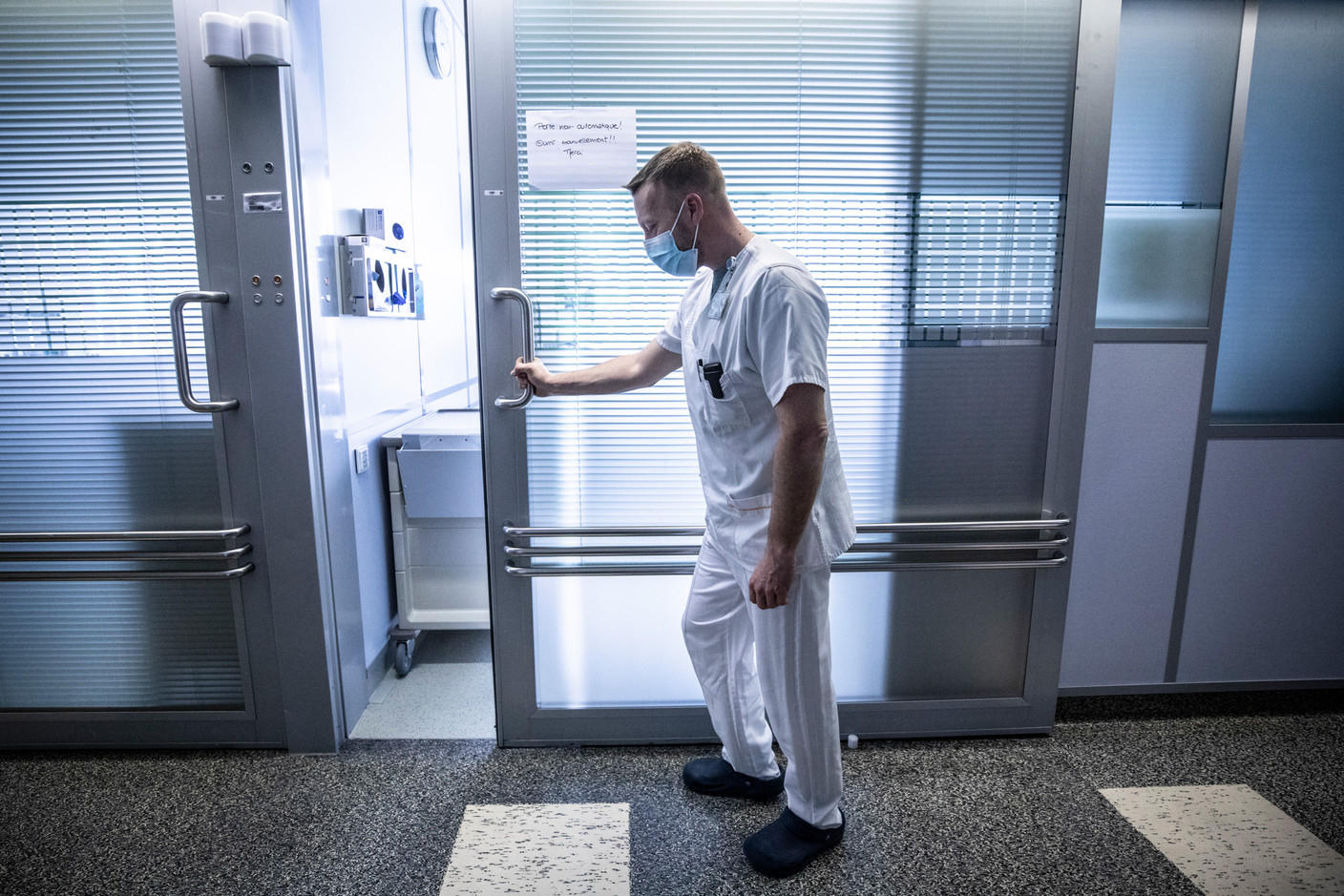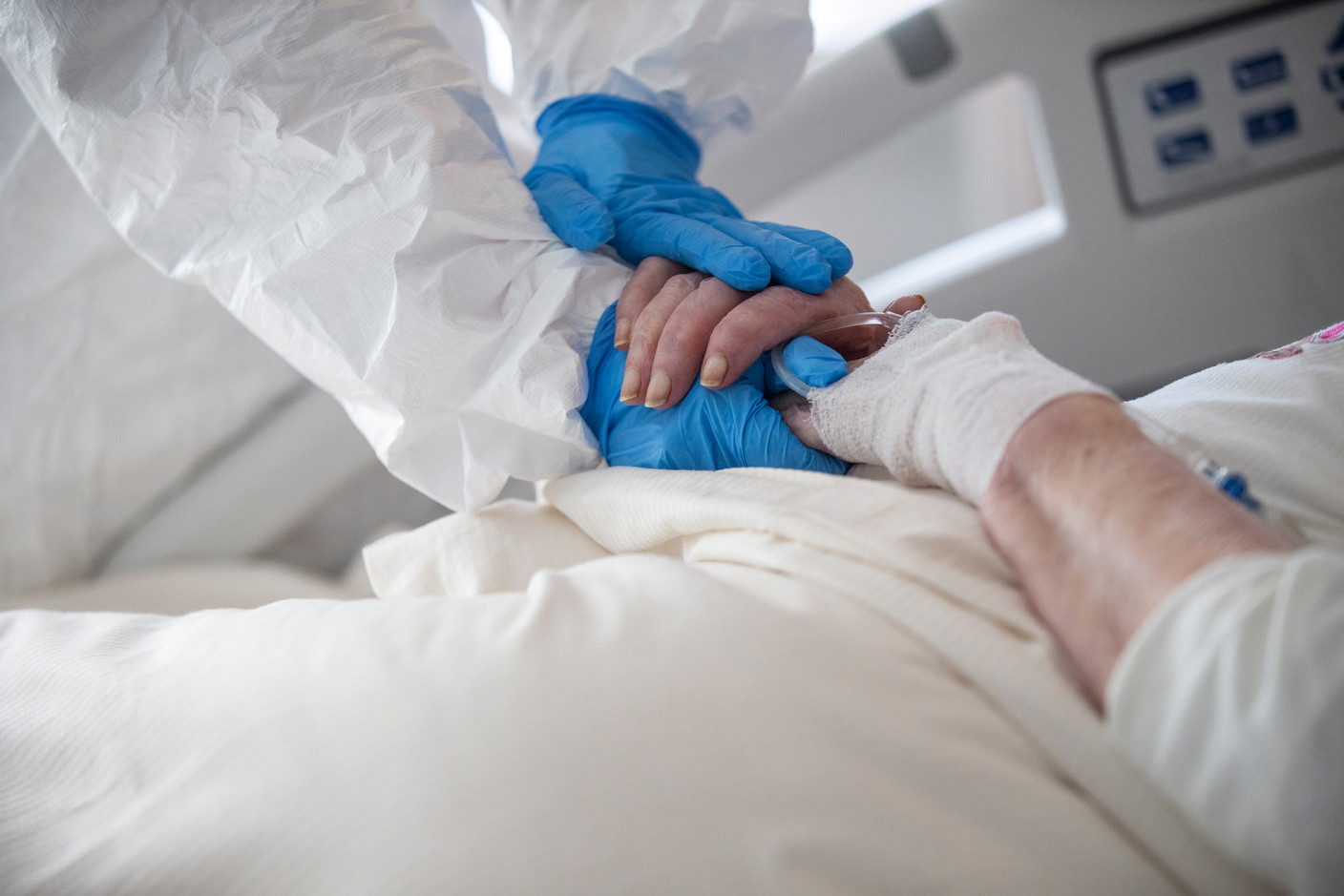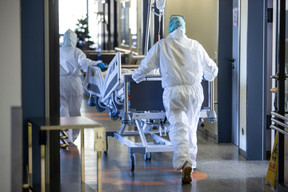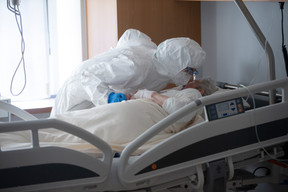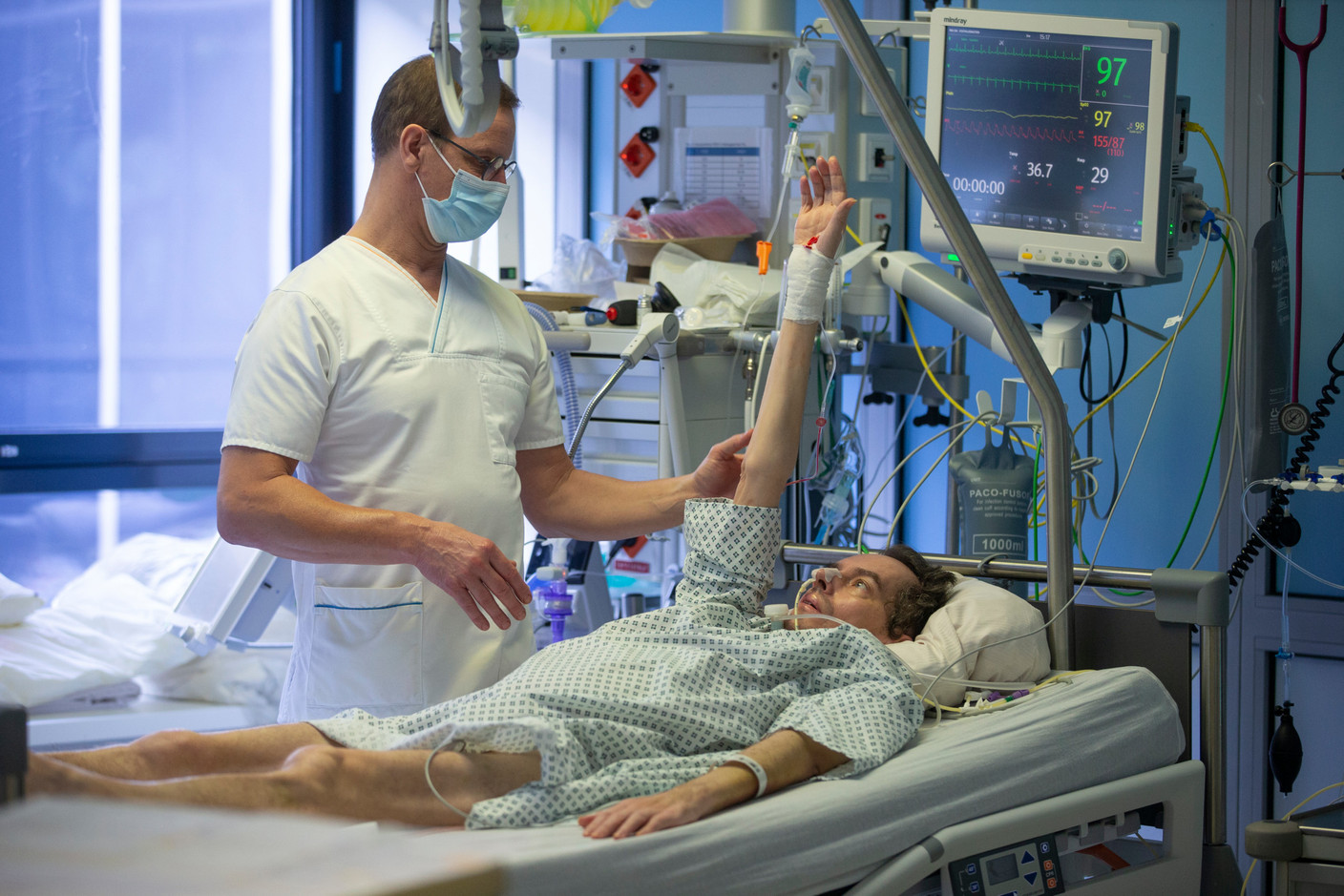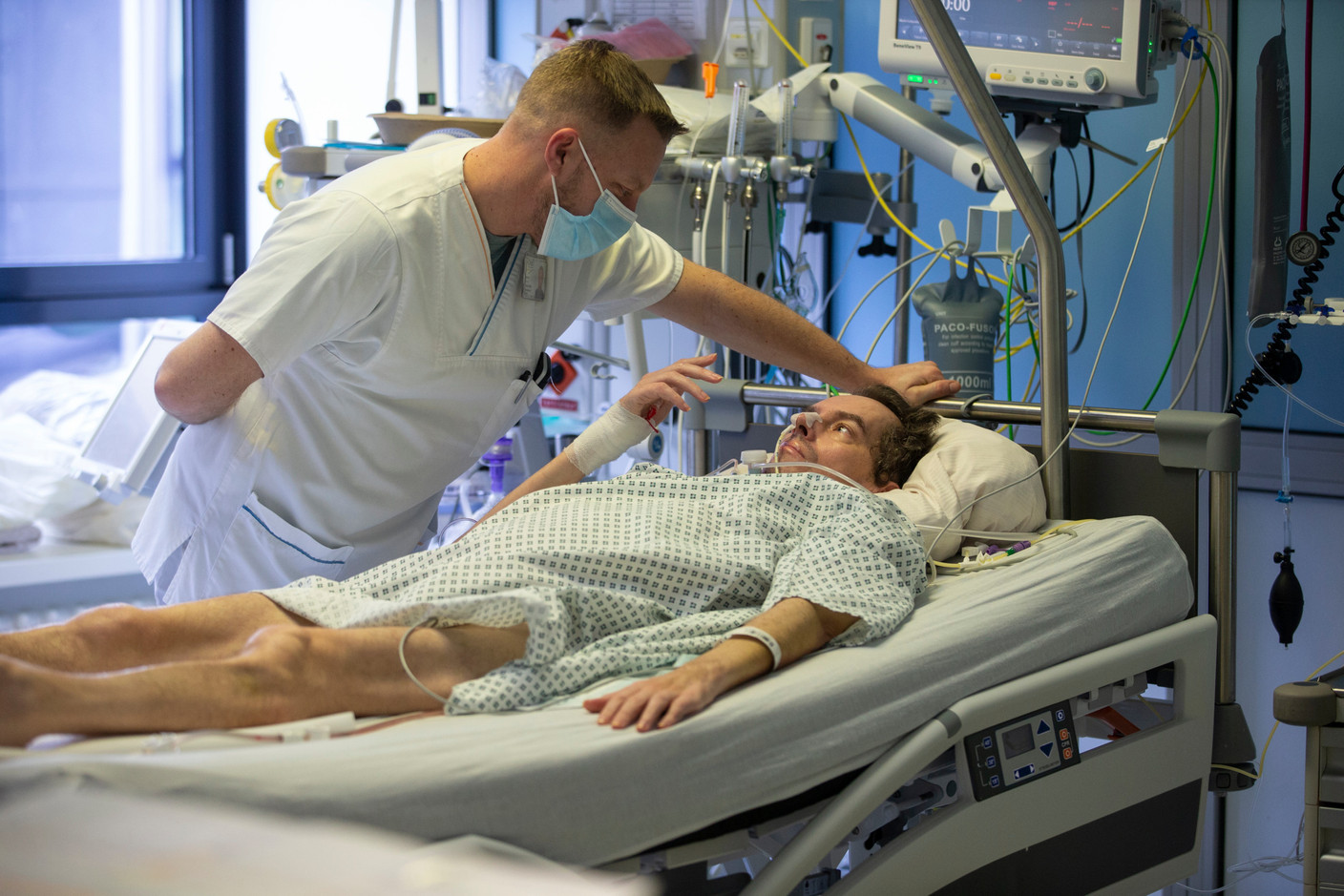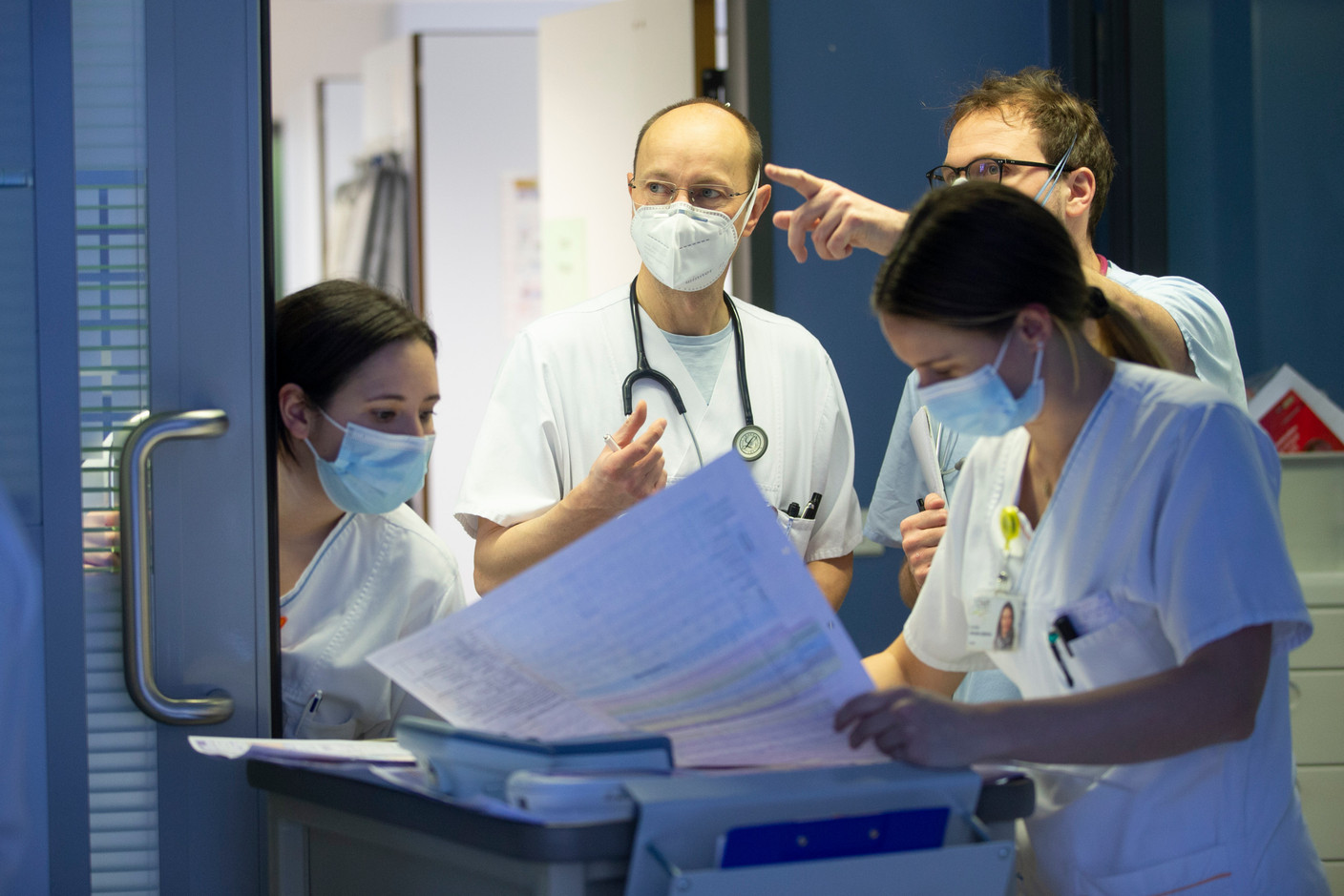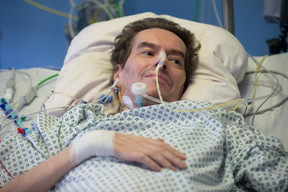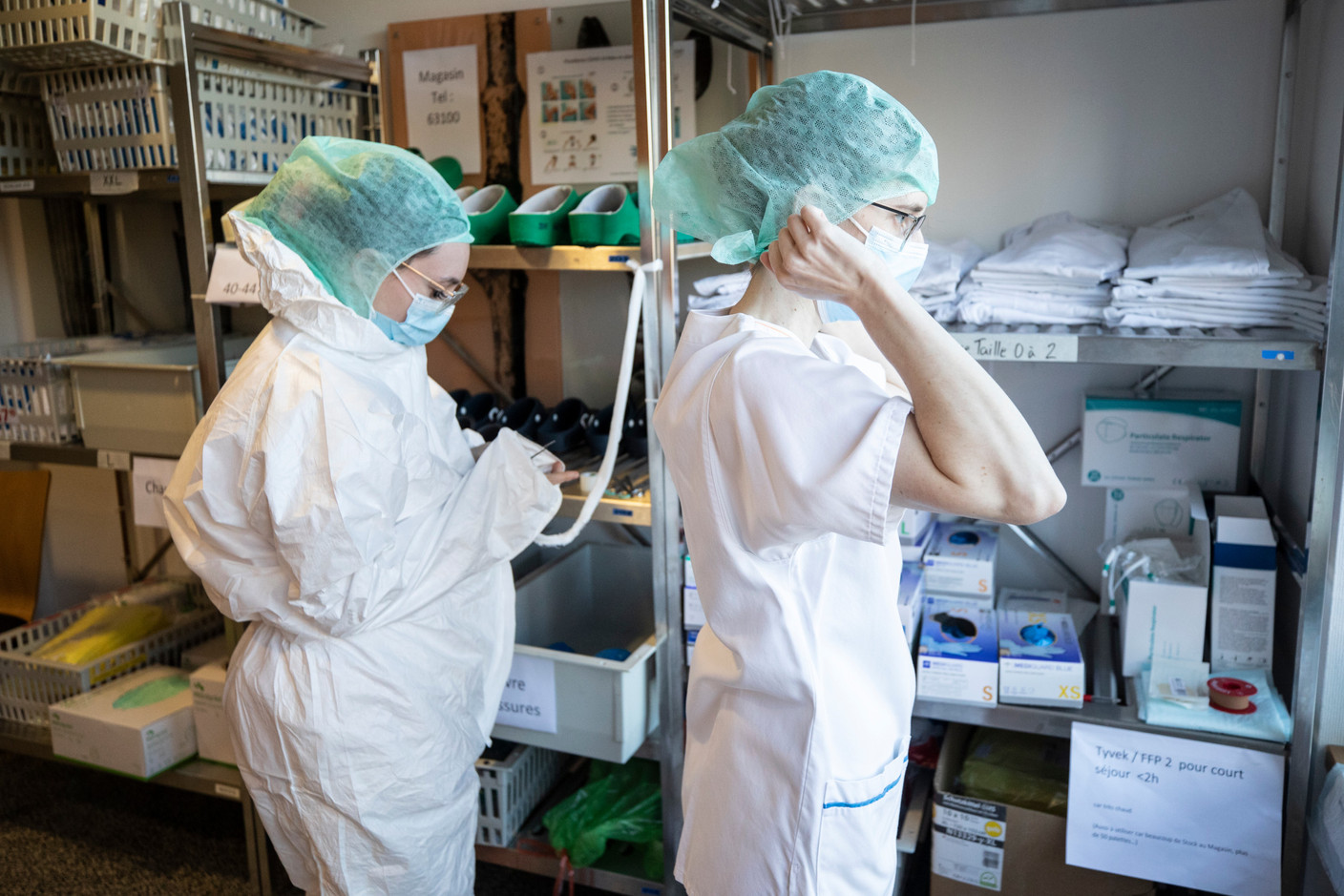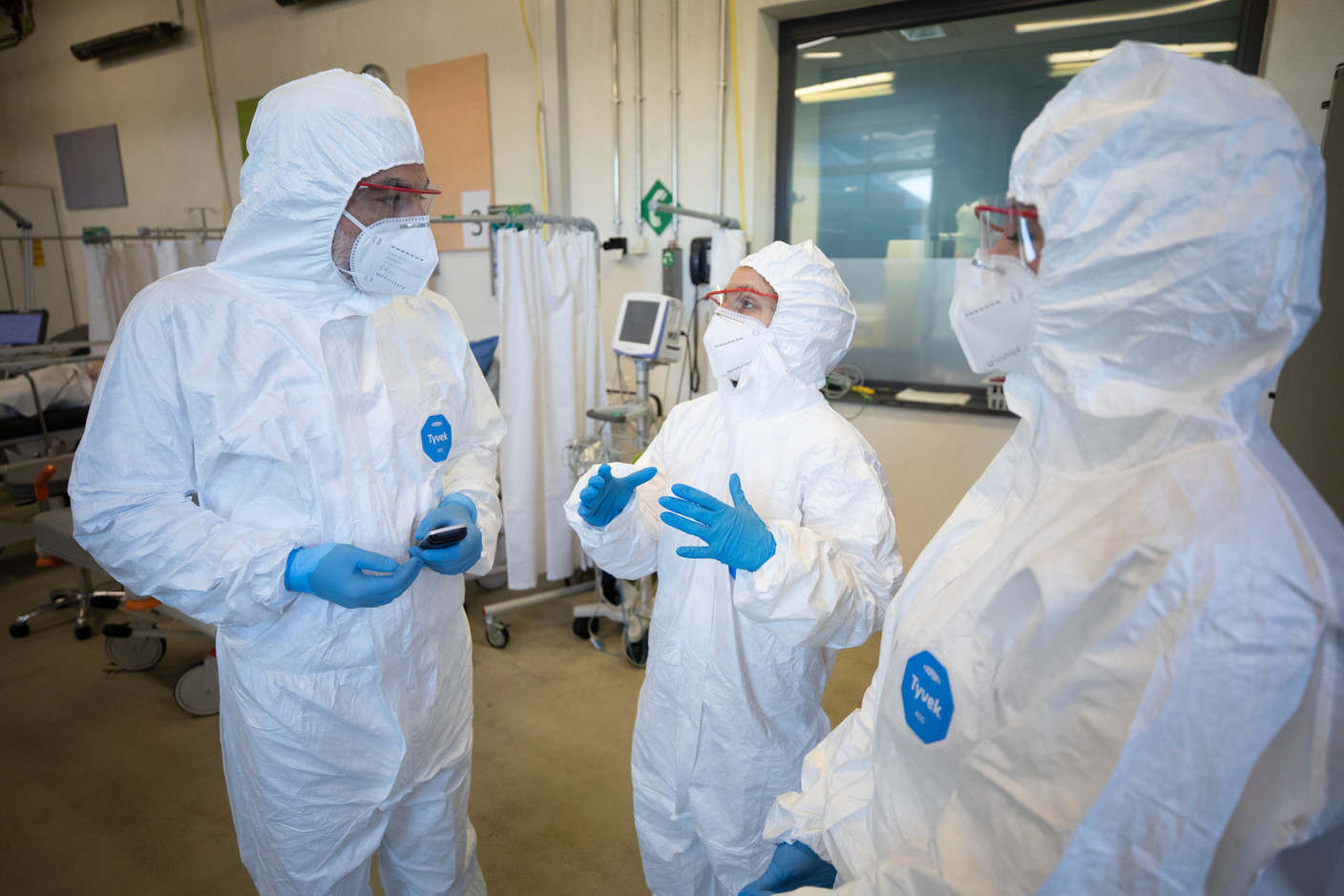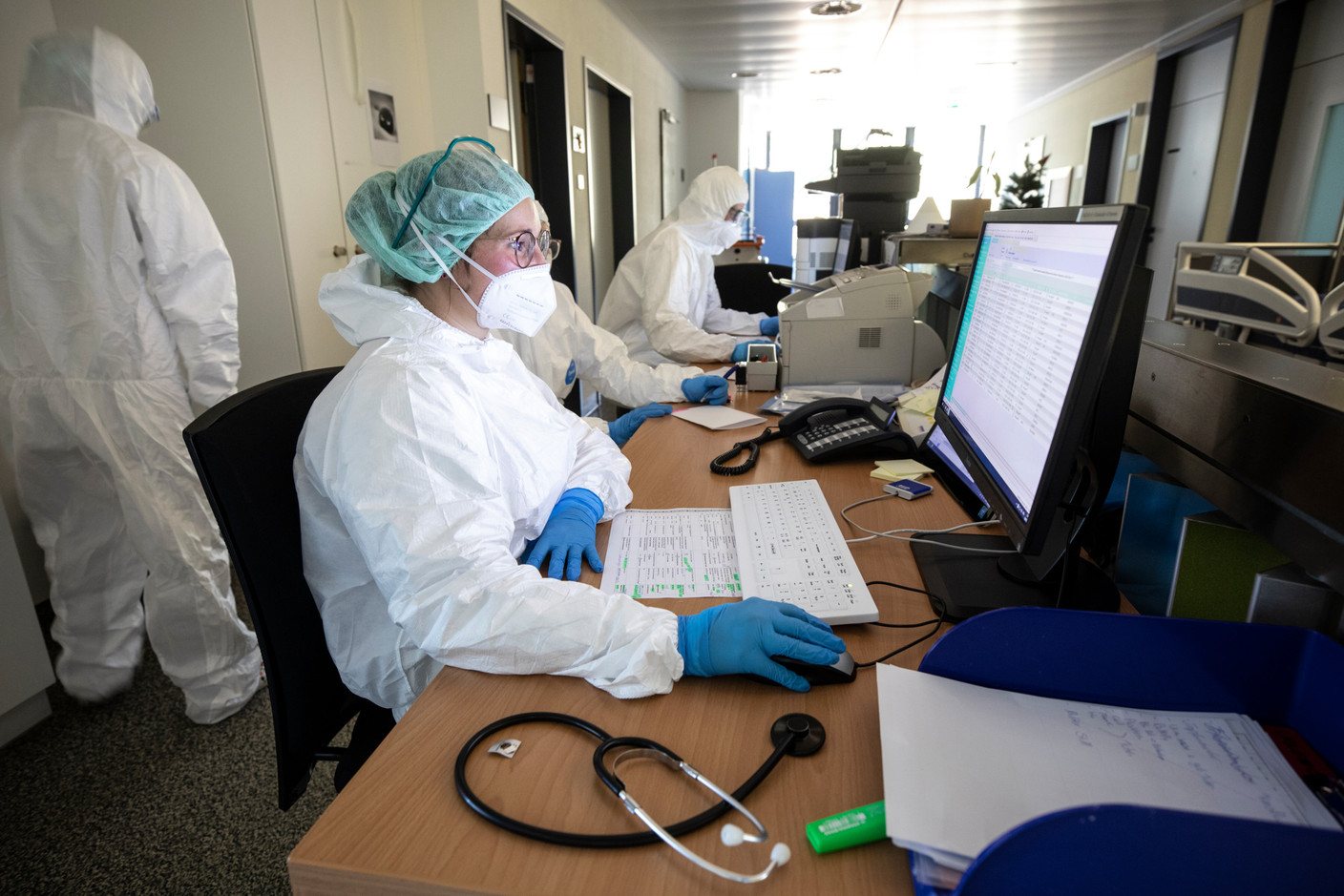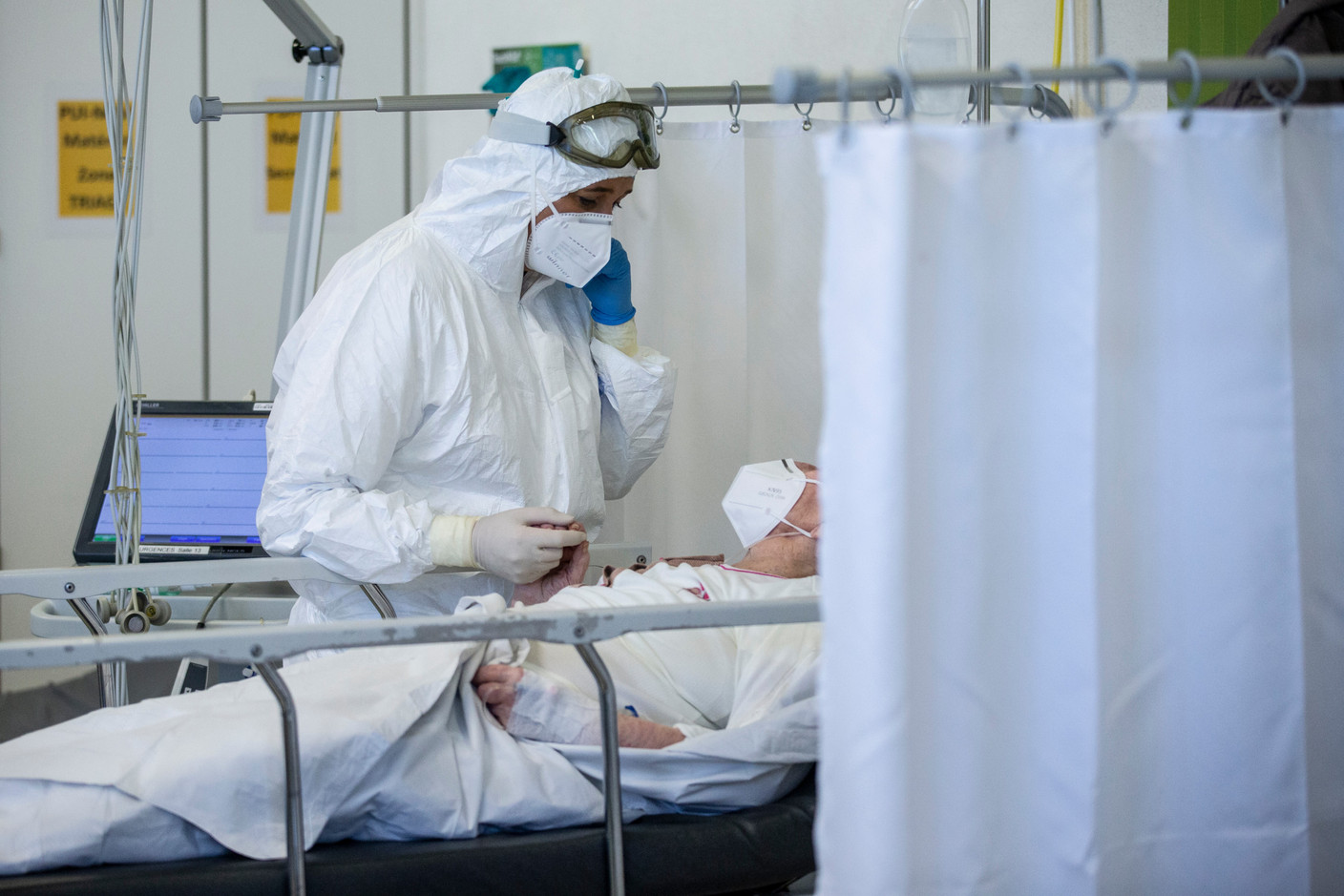“If you had come last week, the situation would not have been the same at all. All our beds were occupied, today we have seven beds free. That's how it is in the intensive care unit," explains Antonio Andrade, middle manager of the Care Directorate, responsible for intensive care and crisis management at the Centre Hospitalier du Nord (CHdN) in Ettelbruck. Paperjam was allowed to visit the hospital for a few hours to take stock of the situation almost two years after the start of the pandemic.
“The first lockdown was in the end the most manageable situation for us,” says Gilles Martin, head of the intensive care unit. “The whole country was at a standstill, so there was almost no traffic on the roads and we were focused on the Covid cases. Now the country is functioning normally, so we have to juggle between patients in intensive care following their Covid-19 contamination, polytrauma patients following an accident and post-operative patients.”
In intensive care for almost 50 days
The intensive care unit has sixteen beds. During our last visit in January, three patients were still in hospital following their Covid-19 infection. And out of the other patients in the unit, six were present with complications from the coronavirus. One of them, Sébastien, a 47-year-old father of four, had been in intensive care for almost 50 days when we met him. He agreed to answer our questions, but “as he has been intubated, sedated and ventilated for several weeks, he can no longer speak for the time being because of the after-effects”, explains Martin.
With head and hand movements, the forty-year-old, who has no co-morbidities apart from a chronic illness, confides that he was not vaccinated and that he now regrets it. His family can visit him and he talks to his children via a tablet. Sébastien also says that his whole family is now vaccinated following his hospitalisation. “He is much better than a few days ago, but because of the lying down position his muscles are atrophied and he has mobilisation exercises every day.”
Although Sébastien is now out of the woods, “when he gets out of the hospital he won't go home, long weeks or even months of re-education are waiting for him in a specialised establishment,” says Martin. The head of the intensive care unit adds that in his department, patients who need respiratory assistance are not intubated for long. “We quickly install a tracheal cannula that allows patients not to be bothered by a tube in their mouth and throat.”

Antonio Andrade, middle manager of the Care Directorate, head of intensive care and crisis member at CHdN. (Photo: Guy Wolff/Maison Moderne)
In the emergency room: overalls, FFP2 masks, gloves and glasses
On the ground floor, the atmosphere in the emergency department was different that day. While we were there, we experienced first-hand a crisis situation related to a lack of beds. “This moment illustrates the situation in January, which is so different from the period dominated by the Delta variant,” explains Anja Di Bartolomeo, marketing and communications manager at the CHnD. “The emergency department is the only one in the hospital that never stopped.”
In contrast to the intensive care unit, where staff no longer wear overalls permanently, in the emergency department the 48 carers wear overalls, FFP2 masks, gloves and goggles as soon as they enter the installed unit. “This way they are protected if a patient with Covid-19 unknowingly enters the emergency room,” adds Andrade. “The situation is really different today with the Omicron variant, because as it is much more contagious, we have more patients who are affected and therefore need to be isolated, but without the reason for their coming to the emergency room or hospitalisation being due to Covid-19.”
Teams in departments such as the emergency room are therefore feeling the pinch, after almost 24 months of the pandemic, “of isolation, restrictions, difficult working conditions. And still because of Omicron, in terms of human resources, the teams must also deal with the absence of their colleagues who are positive, or who are contact cases. We are fortunate to have a great deal of mutual support between departments to make up for absences. Our technical services teams also do a remarkable job to enable us to work in good conditions,” continues Andrade.
The emergency department receives an average of 15 to 20 patients a day. On the day we visited, two patients in the department were already in the Covid section and four people came in half an hour, including a patient in respiratory distress. “In these cases we quickly convene the crisis unit, because unit 22 was full and this patient had to be transferred.”
Caring for patients and managing Covid within the team
Care unit 22 is dedicated to Covid patients “who have breathing difficulties but who do not need to be in intensive care,” explains Dr Pierre Wolter, a pulmonologist and private practitioner at CHdN since March 2020. “I arrived just at the beginning of the pandemic,” he smiles. “Depending on the number of cases in the department, we push the windscreen to accommodate the extra patients in the corridor. We are finding that the Omicron variant is not causing an increase in hospital admissions, unlike Delta. Vaccination has also been an ally for us, it has changed everything for the number of cases, but also for us caregivers.” While at the height of the pandemic Covid patients in normal care occupied up to 45 beds (spread over several wards including unit 12), when we did the story, the ward had 18 beds.
Vaccination was also an ally for us, it changed everything for the number of cases, but also for us caregivers.
What the team of 25 carers on Unit 22 also have to deal with are cases of Covid among the staff themselves. “Or when our child is positive or a contact case and we have to keep them at home,” explains Lisa*, one of the nurses on the ward. “We have a WhatsApp group and luckily we are a big family we always help each other if one of us is away.”
In its activity report published last July, the CHdN explained that in 2020 1,430 patients had been cared for in the intensive care unit (Covid and non-Covid), of which 193 had been intubated. “We were always able to provide emergency medical care as well as examinations and treatments that could not be postponed, all this against a background of personal danger and increased risk of infecting our relatives,” said Dr Hans-Joachim Schubert, Director General of the CHdN.
With a total budget of €138.9m, 17,662 inpatient admissions and 159,183 outpatient admissions, as well as 10,829 surgical interventions were carried out in 2020, in addition to 12,810 dialysis sessions, 3,968 chemotherapy sessions and 46,264 emergency room visits.
* The first name has been changed
This story was first published in French on . It has been translated and edited for Delano.
